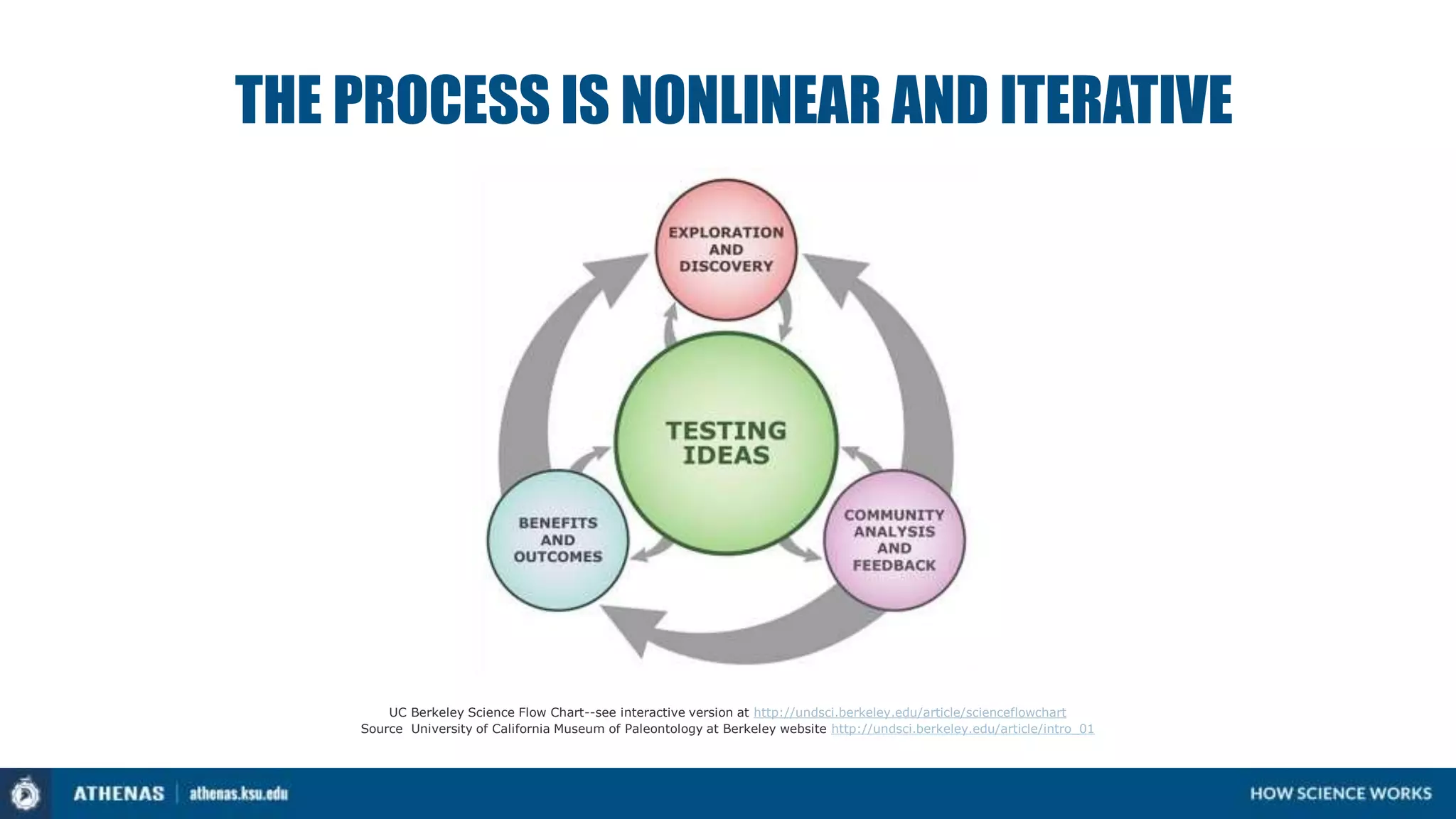1:29 (Narrator) So the real scientific process is not a simple linear one. This diagram shows it can move 1:37 in many different directions. There is often a constant adjustment of knowledge and of 1:42 what the really interesting questions are.
Narrator basically summarizes everything up until this point and introduces the diagram

Go here for a full sized image of the entire scientific process